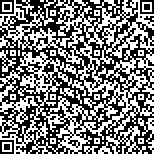| Quote
: |
李文姣, 高湘婷, 李海英, 潘雪, 贺福元.鱼腥草挥发性成分“印迹模板”特征研究[J].湖南中医药大学学报英文版,2024,44(7):1203-1212.[Click to copy
] |
|
| |
|
|
| This paper
:Browser 1406times Download 604times |
| 鱼腥草挥发性成分“印迹模板”特征研究 |
| 李文姣,高湘婷,李海英,潘雪,贺福元 |
| (湖南中医药大学药学院, 湖南 长沙 410208;中药成药性与制剂制备湖南省重点实验室, 湖南 长沙 410208) |
| 摘要: |
| 目的 通过对144批不同产地、不同采收时间鱼腥草根部挥发性成分“印迹模板”的定量分析,阐明其特征,为中药印迹质量评价提供理论参考和实验依据。方法 采集全国不同产地不同采收期的鱼腥草,用水蒸气蒸馏法获取根部挥发油,通过GC-MS法获得指纹图谱并建立相应的成分数据库。对各批鱼腥草挥发性成分“印迹模板”进行定量表征,获得其分子连接性指数(molecular connectivity index, MCI)、物芯指数(core index, CI)、总量统计矩参数、信息熵、信息量等参数。结果 各批样品化学成分种类、数目、含量有较大差异,各批样品间峰面积、信息量变化很大(RSD值分别为68.67%、79.72%),峰数变化较大(RSD值为22.03%);而信息熵、总量统计一阶矩、物芯指数(Xvp零阶、Xvp一阶、Xvp二阶)的变化不大(RSD值分别为16.17%、13.32%、5.46%、6.38%、6.03%)。结论 鱼腥草生长过程中以“印迹模板”为中心修饰而成的具体成分及含量是随时随域变化,整体表现为“变”与“不变“规律,其印迹性质量评价可为中药更全面准确的质量控制提供新方法。 |
| 关键词: 鱼腥草 挥发油 指纹图谱 物芯指数 总量统计矩 信息熵 信息量 印迹模板 |
| DOI:10.3969/j.issn.1674-070X.2024.07.008 |
| Received:November 29, 2023 |
| 基金项目:国家自然科学基金项目(82274215);湖南省自然科学基金项目(2021JJ30509);湖南省“国内一流培育学科”药学开放基金项目(2020YX13);湖南中医药大学研究生创新项目(2022CX13)。 |
|
| Characteristics of the “imprint template” of the volatile components of Houttuynia cordate Thunb. |
| LI Wenjiao, GAO Xiangting, LI Haiying, PAN Xue, HE Fuyuan |
| (College of Pharmacy, Hunan University of Chinese Medicine, Changsha, Hunan 410208, China;Hunan Key Laboratory of Druggability and Preparation for Chinese Medicine, Changsha, Hunan 410208, China) |
| Abstract: |
| Objective To elucidate the characteristics of the "imprint template" of volatile components from 144 batches of Houttuynia cordate Thunb. roots from different origins and harvesting time through quantitative analysis, providing an theoretical reference and experimental evidence for the quality evaluation of Chinese medicine imprint. Methods Houttuynia cordate Thunb. from various regions and harvest periods across the country were collected. The volatile oil from the roots was extracted through steam distillation. GC-MS was used to acquire their fingerprint chromatograms and establish a corresponding component database. The "imprint template" of volatile components from each batch was quantitatively characterized to obtain parameters such as molecular connectivity index (MCI), core index (CI), total statistical moment parameters, information entropy, and amount of information. Results Significant differences were observed in the types, numbers, and content of chemical components among different batches. Variations in peak area and information content among the batches were considerable (with RSD values of 68.67% and 79.72%, respectively), and the number of peak also varied significantly (with RSD value of 22.03%). However, information entropy, total statistical first-order moment, and core index (Xvp zeroth-order, Xvp first-order, Xvp second-order) showed minimal changes (with RSD values of 16.17%, 13.32%, 5.46%, 6.38%, and 6.03%, respectively). Conclusion The growth process of raw Chinese medicines centers around the "imprint template", which modifies specific individual components with certain content, and the types and content of those components vary with time and field. The overall performance exhibits patterns of "changed" and "unchanged". The evaluation of imprint quality can offer a novel method for more comprehensive and precise quality control of Chinese medicines. |
| Key words: Houttuynia cordata Thunb. volatile oil fingerprint chromatogram core index total statistical moment information entropy amount of information imprint template |
|

二维码(扫一下试试看!) |
|
|
|
|


